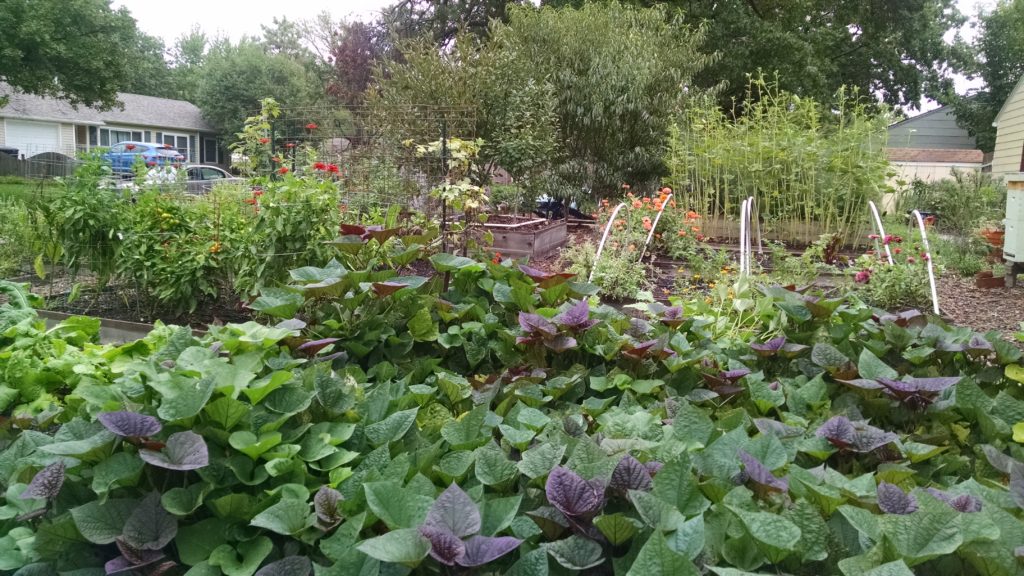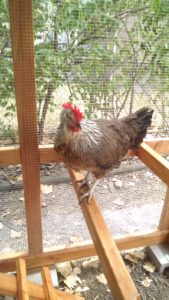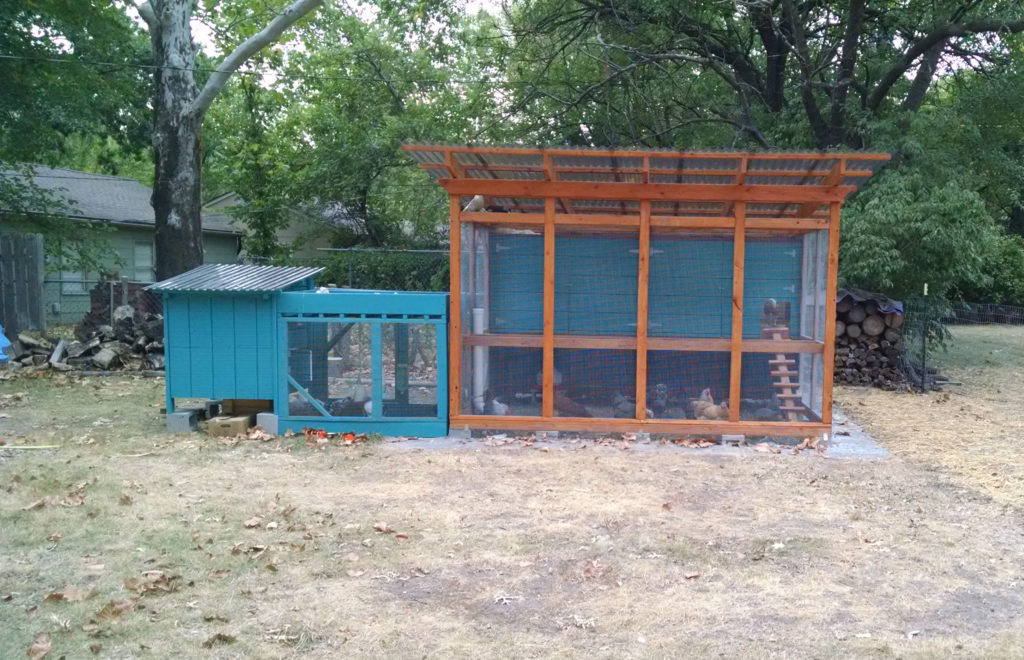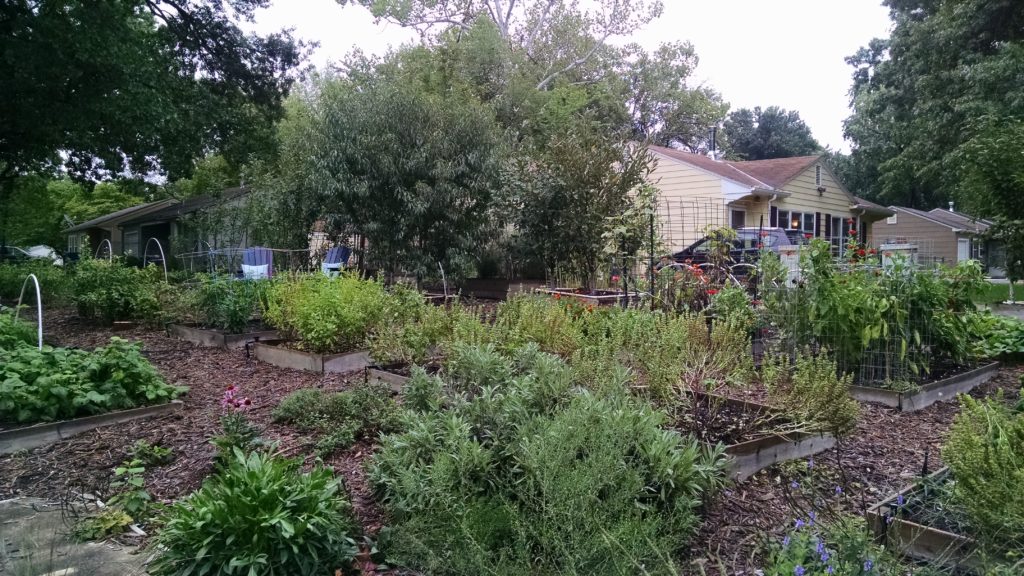When you have given time, effort, sweat, and love to your urban homestead, how do you leave it? Rachel Cunning shares her story of building up her homestead, having to leave what she created, and planning for the next home.
I am standing in the driveway of our suburban homestead. The wind blows lightly through 20 fruit trees, their spring blooms long gone. Red and yellow columbines are dancing ever so slightly, and the summer explosion of native flowers and butterflies is right around the corner. The bees I’ve nurtured hum and buzz, busily racing to and from their hives to gather nectar and pollen. I can hear the contented clucking of chickens in the coop we built in the backyard. Except none of this is ours anymore. We’re flying the coop.

Leaving the Homestead
We are leaving everything behind for a new adventure. My husband and I both accepted jobs that required relocating 10 hours away, so we have packed up and sold our suburban homestead in its entirety—its new chicken coops and 16 chickens; its two beehives; and its perennial flowers, shrubs, and trees. I feel gutted. I have poured so much of myself into this yard and into this house.
When we bought this home years ago, the yard was nothing but a weedy patch of Bermuda grass and dandelions. We created this homestead through our sweat and hard work, with a little bloodshed and no shortage of tears. My husband has always jokingly said that he never saw my vision for what we ultimately created until it grew and blossomed before his eyes. Selling our property has been a loss for me, even though I hope it will be a gift to its next inhabitant.

Fortunata the Chicken
I have had friends ask whether we can transplant our orchard, or even whether I could just take our lone pet chicken, Fortunata, but neither is practicable or advisable. When you move 10 hours away, you leave behind the garden, the bees, and the chickens who would be too stressed on such a trip. I’ll even leave behind my bulky tomato cages. Instead, I am bringing the memories and the know-how with me to start afresh and make my next garden, my next suburban homestead, my next home even better.
Contemplating Moving
When we first began seriously considering the job offer that we ultimately accepted, we started where many people do: looking at pictures of houses for sale in the area where we would finally land. We only looked at a few of them before I realized that, while our current community is very friendly to sprawling suburban homesteads like ours, many communities are not. I already had some doubts about whether I could leave our home, but to have no chickens? No buzzing bees? No over-sized garden? No way!
Luckily, it’s pretty easy to Google “Can you have chickens in….” and target a garden and poultry-friendly community. I learned that in Colorado, counties decide whether you can have chickens in town, and how many. This is a little different from what I have been accustomed to in Lawrence, Kansas, where each town decides on the codes for domestic animals and small livestock within city limits.

At first, I was thrilled by the fruits of my Google search. The community I most wanted to live in allowed chickens! Mere moments later, as I read through the code, I was a little less thrilled; I can only have six chickens on my new property; I’m leaving behind sixteen.
Only Six Chickens?
I am not certain how to manage only six chickens. As much as I love and enjoy our chickens, they are not pets. We give our hens a good, happy life until their second year, when they slow down their egg laying and the replacement hens begin laying eggs. Then, the older hens become, well, stew. Our half-blind Fortunata is the lone exception to this annual cycle.
By limiting ourselves to six chickens, I may need to keep our hens longer than two years and replace them all at the same time. I am already dreading this dearth of fresh, eggs as I eat a lot of them. Nothing tastes better than an egg from your own, happy backyard chicken. I cannot currently envision raising only three baby chicks each year, or the hassle of processing just three older hens. While I am not certain yet how to manage a flock of six hens, I am quite certain that I do want that flock. Perhaps I will do as my many of my friends do and name all of my chickens.
Of course, I will also have to become friends with other chicken owners—which should not be too challenging as we rather tend to flock together. In the past, I have special ordered the chickens every year, picking out different heritage breeds and splitting the minimum mailing order of 15 chicks with friends. Without friends who also want to special-order chickens, I would have to give up the rarer heritage breeds that I prefer.
My favorite breed, of course as a Latin teacher, is the Dorking: a chicken reputed to have been brought to England by Julius Caesar himself. I love these chickens for their squat, matronly looks of disapproval, their five toes, and their history. I had plans to begin a breeding program this year with a friend of mine whose acreage is the ideal spot for noisy—thus not allowed in the city— handsome Dorking roosters. For many reasons, this was not to be.

Dorking rooster
Chicken-less Summer
This year, instead of raising my own baby chicks, I will have none. With the chaos and stress of moving 10 hours away, I don’t envision us building a chicken coop our very first summer. Honestly, I also know better than to ask my husband to sacrifice any time this summer building a new coop when he built three chicken coops just last summer.

Two of those three chicken coops reside on the homestead that we just sold. I am so grateful that the new owners wanted these coops because the idea of dismantling them breaks my heart. Our chicken coop setup has a main coop and a smaller coop, both with their own individual runs. The smaller coop can be closed off from the larger coop. This setup would have worked perfectly for the baby chickens we had planned to raise this year. They would have grown up essentially with the playpen coop, and would have been nearly full-sized when they were integrated into the main flock. We also could separate an injured chicken if necessary if baby chickens did not occupy it. We dubbed the third coop “the love nest,” and we intended to use it for our chicken breeding program at my friend’s home.

Interior of the old, inadequate coop
When we first purchased our home with its weedy patch of yard, it came with two chickens and a garden shed that had been retro-fitted into a chicken coop. It was thoroughly inadequate for many reasons, but it had not made our homestead’s to-do list until last summer. None of these coops are moving with us, though my husband labored over each of them. Each coop made, or would have made, raising chickens so much easier. We loved our big new run with its excellent ventilation and lighting. The chickens liked it too.
Now that we have been spoiled with such an excellent design for a coop, I have no desire to keep chickens in something as cobbled together as our first coop was. So I will wait to have the next flock of chickens until I can have a serviceable chicken coop, and I am not yet certain when that time may be. Ideally, my husband can build us another chicken coop at our future homestead, but it may not be in time to raise baby chicks next year, either.
Planting New Roots

When we buy our next homestead with its next patch of weedy grass, our to-do list will be sizable. After all, I am not only leaving my chickens. I am leaving an orchard, blueberry bushes, beehives, native flowers that I planted just last year, my whole garden, home, and community. Transplanting is a destructive, traumatic process. You pull the plant from its home and its rich soil. Then, before replanting, you unbind the clump of wispy, white, roots to help them spread deep into the earth once again.
As much as I love this place and the suburban homestead we’ve created here, I’m not root bound. Instead, like the seedling tomatoes and peppers that I would have started indoors weeks ago, and that I would be lovingly transplanting into my garden right now, the change will be a little traumatic at first. I may even drop a leaf or two. Then, though, I’ll stretch my fingers deep, deep into the soil of my new home, and I’ll flourish, vibrant and green.

Rachel Cunning is a Latin, English, and ESL teacher. She loves to grow what she loves to eat just as much as she likes cooking it, and she’s equally committed to cultivating native plants and pollinator gardens. She blogs mostly about her adventures in suburban homesteading, including beekeeping, chickens, gardening, and food preservation, at Honeyed Homestead, but she’s not above nerding out about Latin or describing her forays into the wilderness there too.












